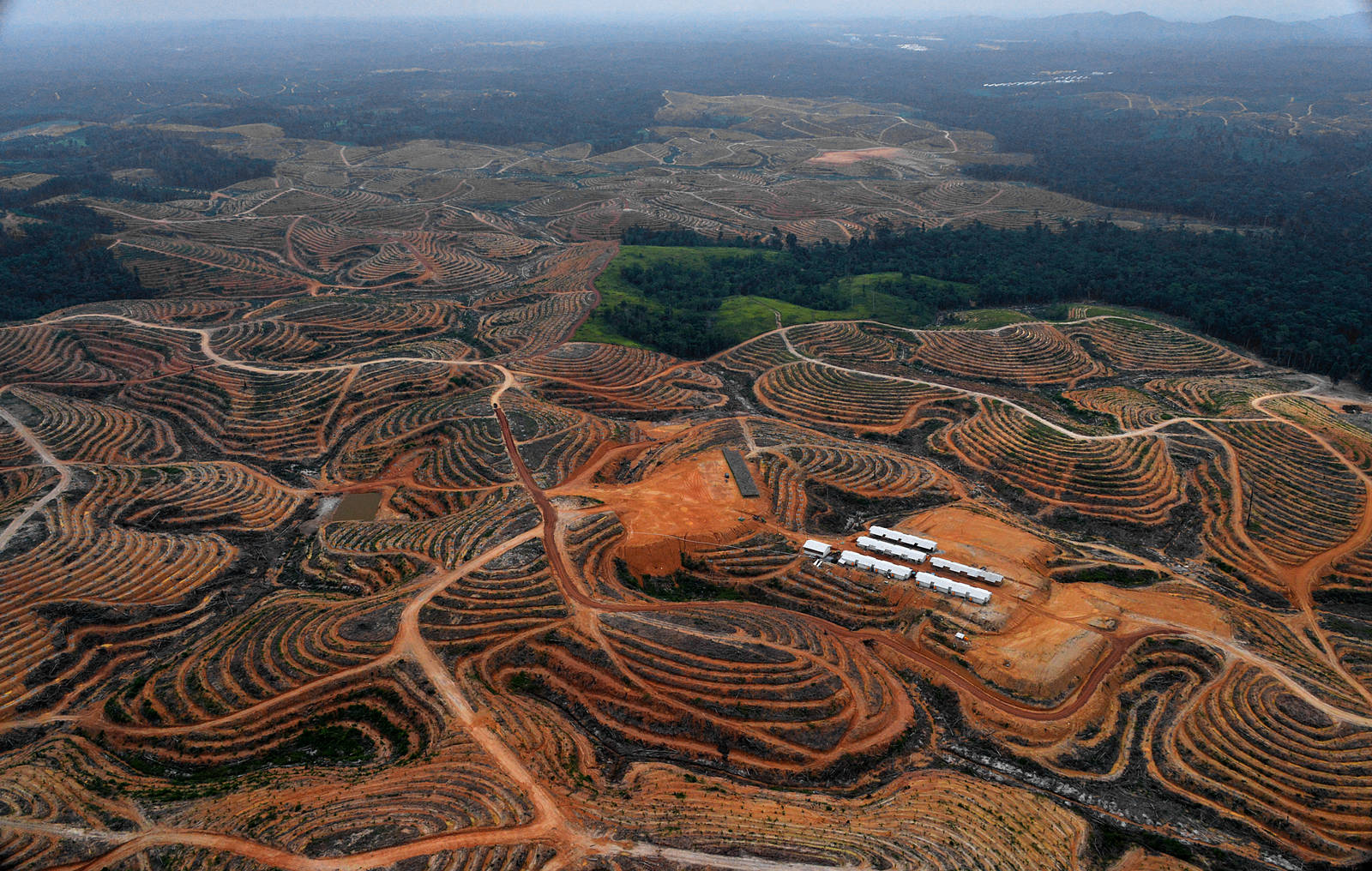Name of Student: Juma Ayoub Tegeje
Names of Supervisors:
1. Dr. Kilawe, C – Department Of Ecosystems And Conservation, SUA
2. Mkonda, M. Y- Department Of Geography And Environmental Studies, SUA
3. Dr. Pattison, Z – Newcastle University, Uk
Background
Ugalla River (UR) is a non-perennial river (NPR). The isolated pools (IPs) of this river are infested with water hyacinth at varying percentage covers (Njau, 2013; Kalumanga, 2015; pers. comm). Science establishes that water hyacinth infestation is influenced by physicochemistry of infested water body (e.g. Saha et al., 2022). Impliedly, variation in the percentage cover of water hyacinth in the IPs of UR is suggestive of variation in physicochemistry of these IPs. So far, perennial rivers (PRs) and NPRs in Tanzania are under-represented in terms of studies that assess the physicochemical properties of water in relation to water hyacinth infestation.
In tropical Africa, water hyacinth studies in relation to the physicochemical properties of infested water bodies largely focus on lakes (e.g. Mironga et al., 2012; Hailu et al., 2020; Dersseh et al., 2022) and, to a smaller extent, on PRs (Nyananyo et al., 2007; Kouamé et al., 2009). A similar situation applies to other parts of the world (e.g. Nguyen et al., 2015).
Over 10 fishing villages along the shores of Nyumba ya Mungu Dam (NYMD) are infested by Prosopis. Visually, the abundance of Prosopis and that of native plants show a negative correlation. The abundance of Prosopis increases towards the Dam while that of native plants increases with increasing distance from the Dam. The negative correlation between Prosopis and native plant species is suggestive of two premises worthy of investigation. Firstly, drivers of Prosopis abundance in NYMD area vary with distance from the Dam. Secondly, Prosopis plants and/or other factors drive the abundance of native plant communities.
Globally, drivers of Prosopis infestation and its impacts on native species are widely documented (e.g. Eshete et al., 2020; Shiferaw et al., 2022). Yet, we lack adequate information for NYMD area. Past Prosopis studies in Tanzania are limited in scope and spatial terms. Massawe (2016) mapped Prosopis-infested areas in northern Tanzania, yet this study was general and lacked specific focus on NYMD area. Kilawe et al. (2017) highlight the impacts of Prosopis on pasture and agricultural lands, rendering less attention on drivers of its infestation. Castillo et al. (2020) identified different Prosopis species and deduced their introduction histories, leaving the drivers of its abundance and distribution unexplored. Dakhil et al. (2021) evaluated the drivers of Prosopis infestation, yet the study had a global focus, and used distribution data from online databases. Apparently, a study is required to understand the specific factors accounting for the invasibility of the NYMD area by Prosopis.
Human diversity in perceptions of the socio-economic impacts of water hyacinth and Prosopis is important in managing these species, yet invasion science and management put less consideration on this aspect (Shackleton et al., 2017; 2019; Ruwanza & Thondhlana, 2022). Recently, the British Ecological Society has developed the socio-economic impact classification of alien taxa (SEICAT) protocol (Bacher et al., 2018) to assess human diversity in perceptions of invasive species. Presently, studies that applied this protocol (e.g. Allmet, 2022; Bacher et al., 2018; Kesner & Kumschick, 2018; Evans et al., 2020; Galanidi et al., 2018; Mohanty et al., 2021; Oussellam et al., 2021) used published literature to collate impact data. Secondly, the protocol has been narrowly applied using field data. Thirdly, the reviewed literature shows no evidence of its application to water hyacinth and Prosopis studies.
Despite the fact that autochthonous human adaptation to bio-invasions is one of the approaches for managing invasive species (Howard, 2009; Güereña et al., 2015; Howard, 2019), little research has been directed at understanding how humans adapt to invasive species at multiple temporal and spatial scales (Howard, 2009; 2019). Autochthonous human adaptation to bio-invasions aims to moderate impacts, avoid harm or exploit beneficial opportunities associated with invasive species (IPCC, 2014). How humans adapted to water hyacinth and Prosopis in the past, how they are adapting at present and how they are likely to adapt in the future as well as the factors that may facilitate or impede adaption in a specific area remain less explored in Tanzania.
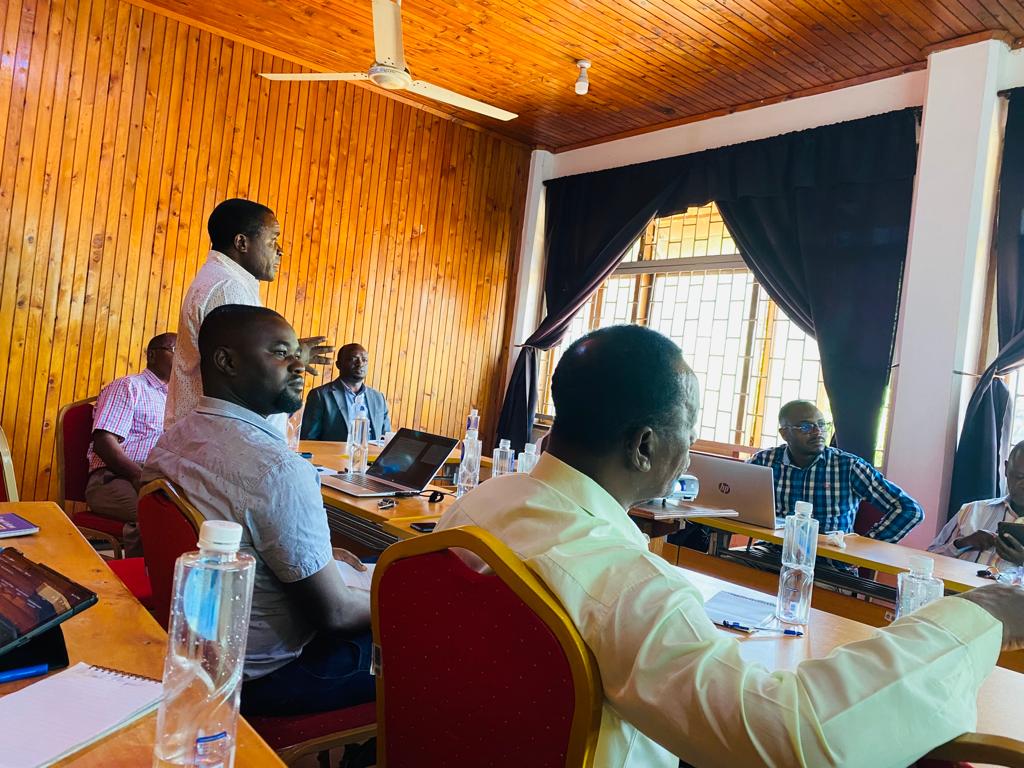 Mr. Juma Ayoub Tegeje is presenting a PhD concept in the Department of Ecosystems and Conservation
Mr. Juma Ayoub Tegeje is presenting a PhD concept in the Department of Ecosystems and Conservation
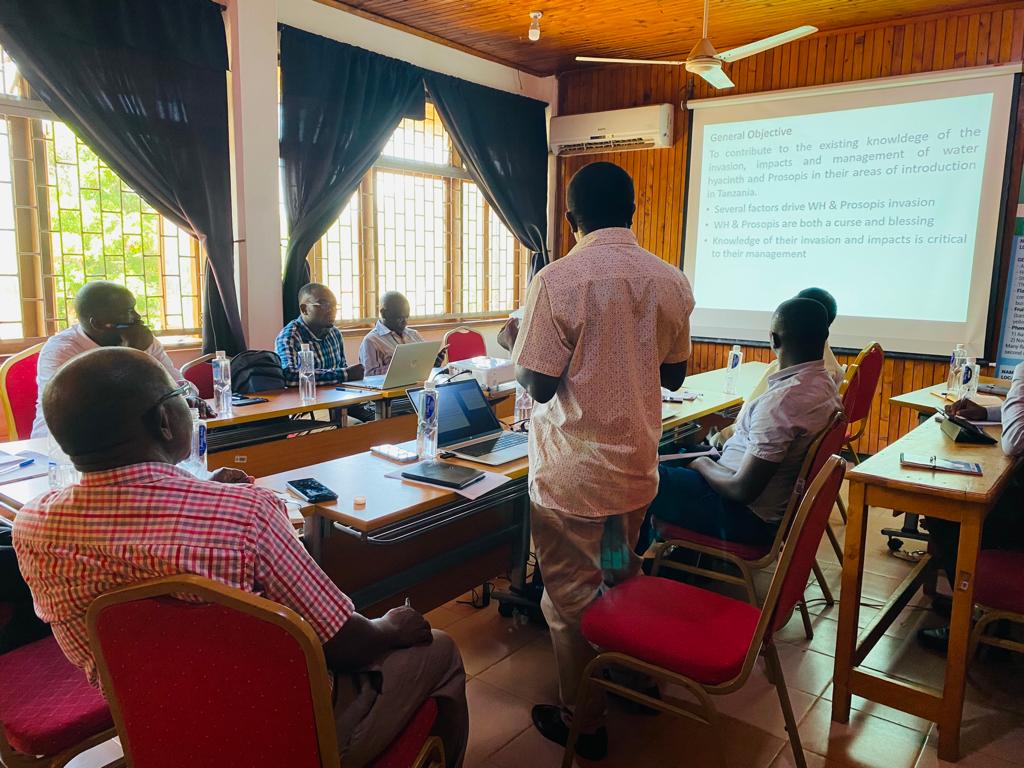
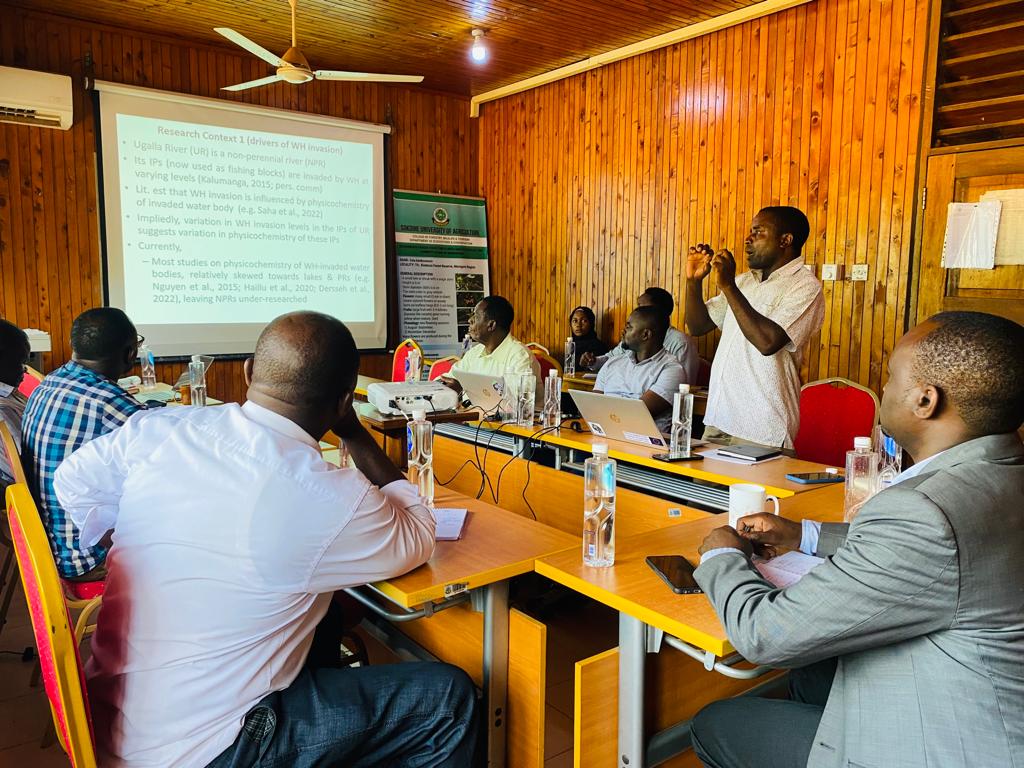
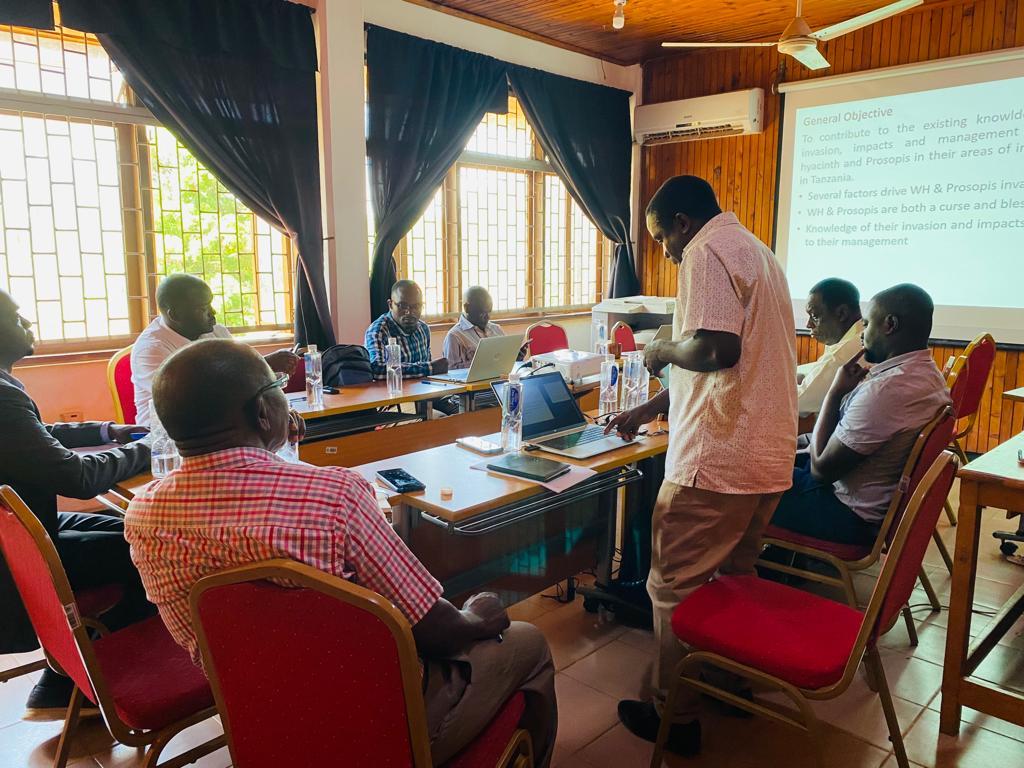
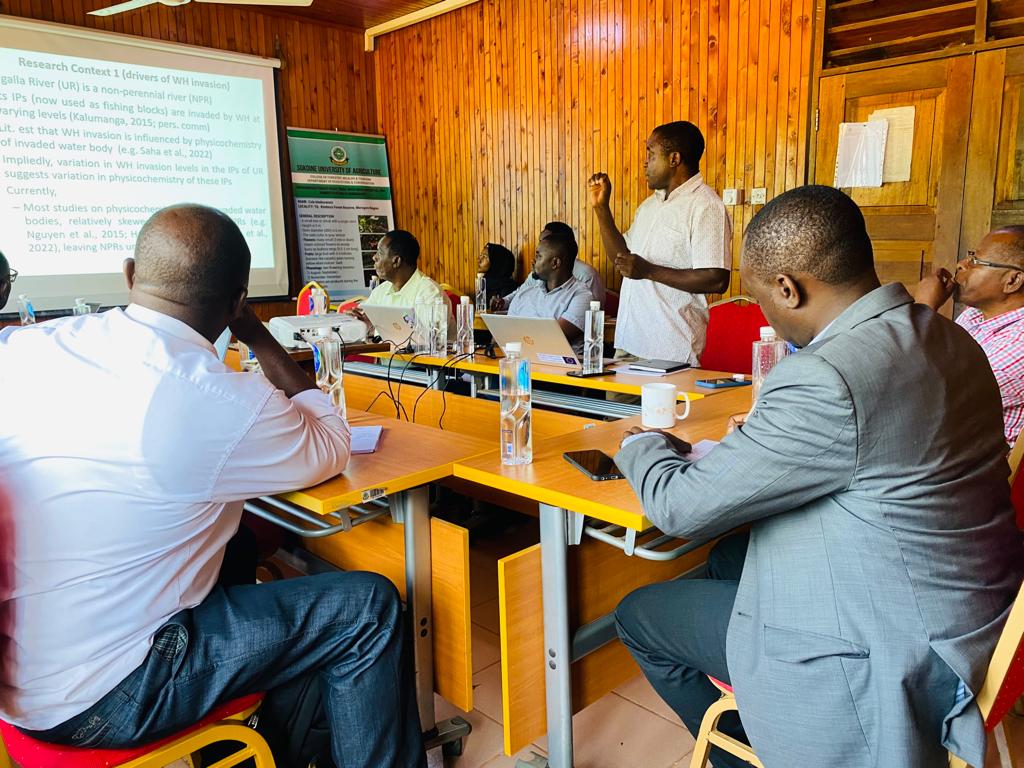
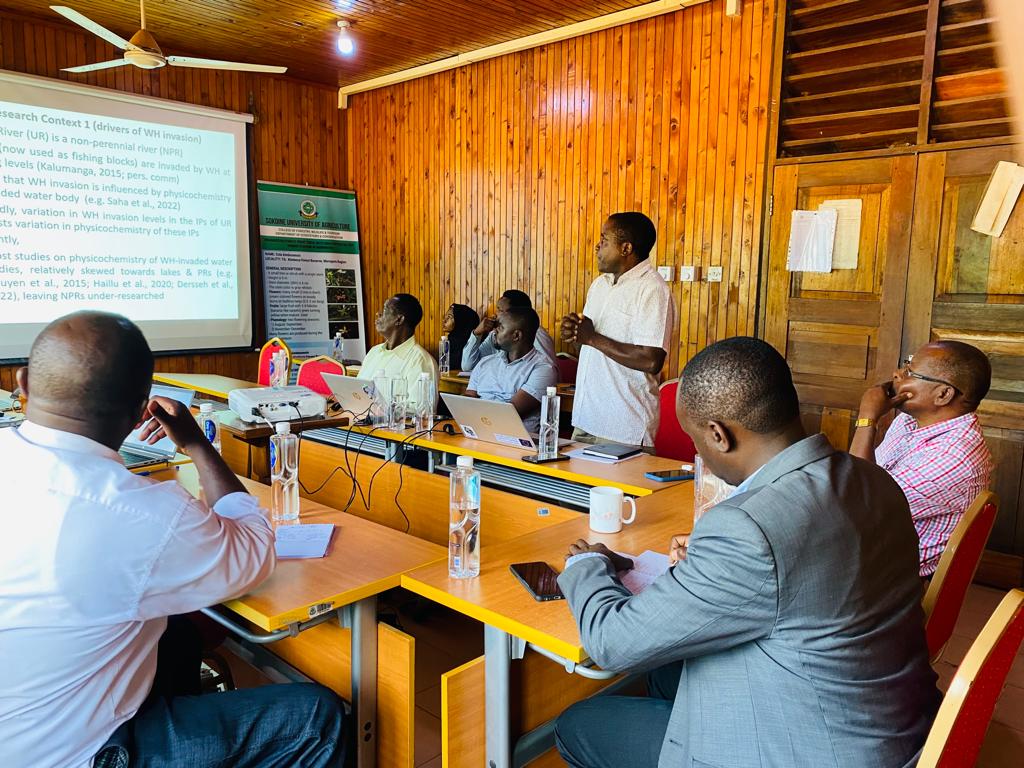
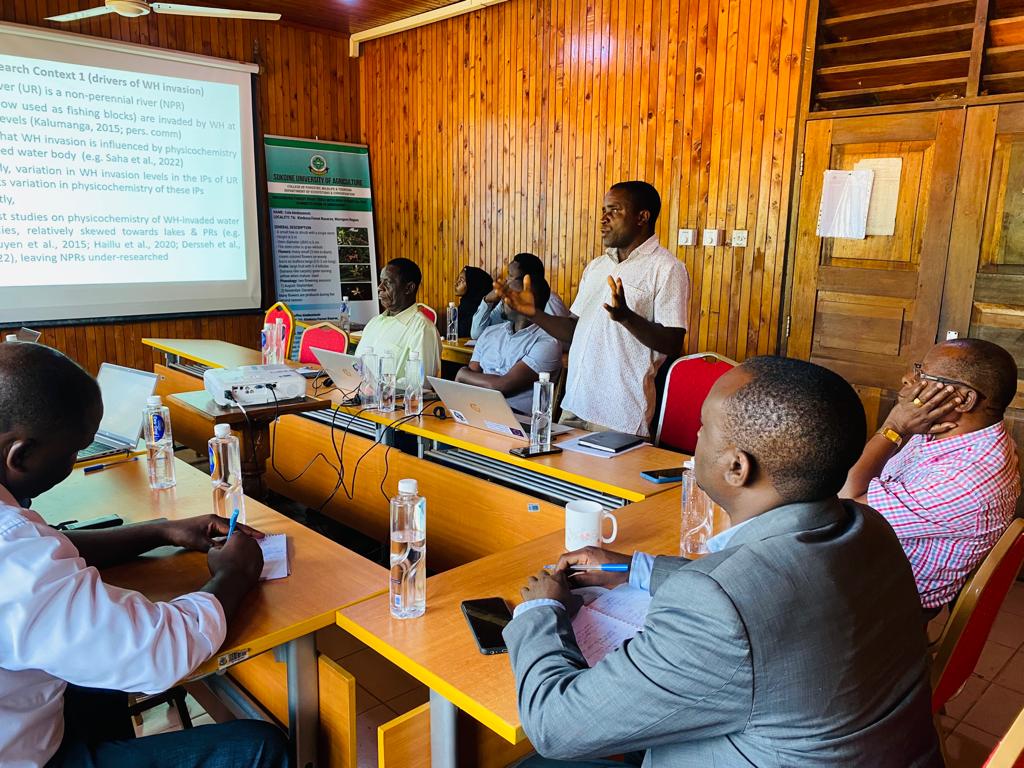
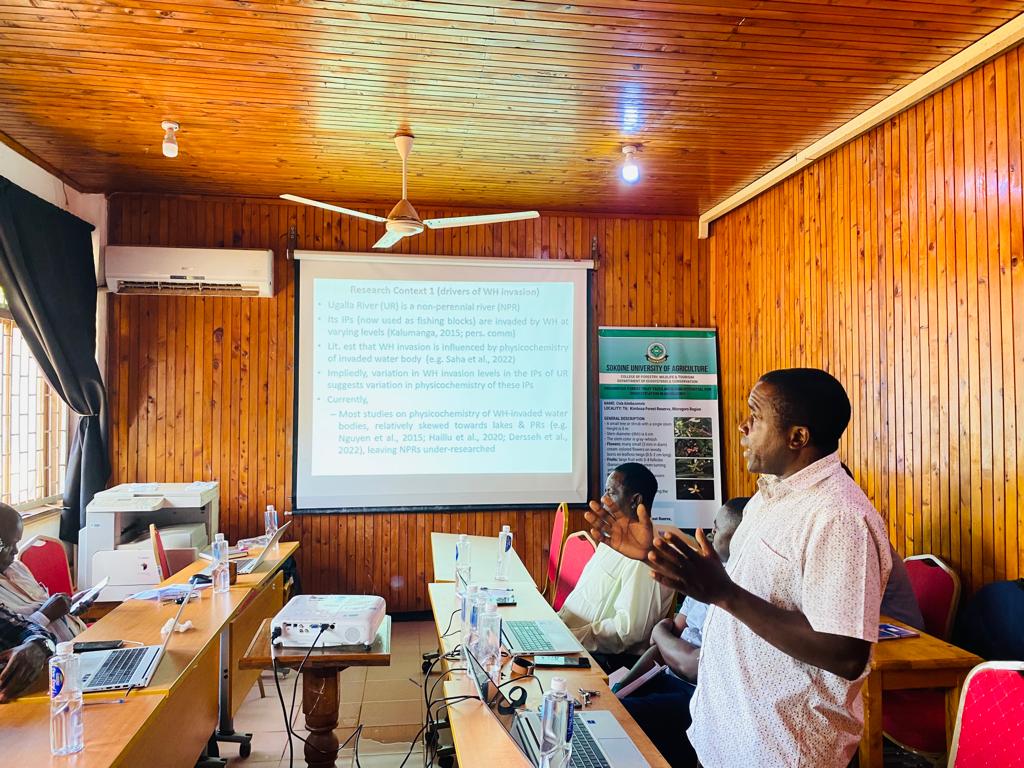 For more information, please contact:
For more information, please contact:
Head of Department,
Dr. Charles Kilawe,
Department of Ecosystems and Conservation,
College of Forestry Wildlife and Tourism
PO Box 3010, Chuo Kikuu, Morogoro, Tanzania
ckilawe@sua.ac.tz
+255 752 581 069




